28 September 2025
Today, we again travel by coach: direction northeast 190 miles to Yudanaka. Distance doesn’t amount to much but the slow, busy roads take most of our day.
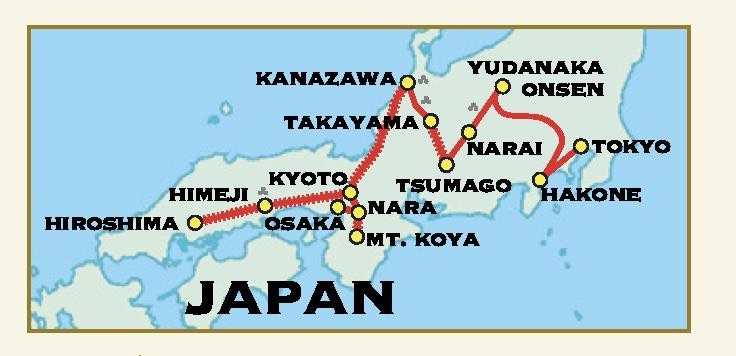
Once we arrive, we will visit a hot spring village far less famous for its hot baths than for the monkeys who have usurped them.
Hell Valley
Jigokudani, which means “Hell Valley,” earned its fiery name from the steaming hot springs and bubbling volcanic activity in the mountains of Nagano Prefecture. Despite the dramatic name, it became world-famous not for fire and brimstone but for the Japanese macaques, affectionately called snow monkeys. Years ago, they discovered these steaming pools make the perfect winter spa.
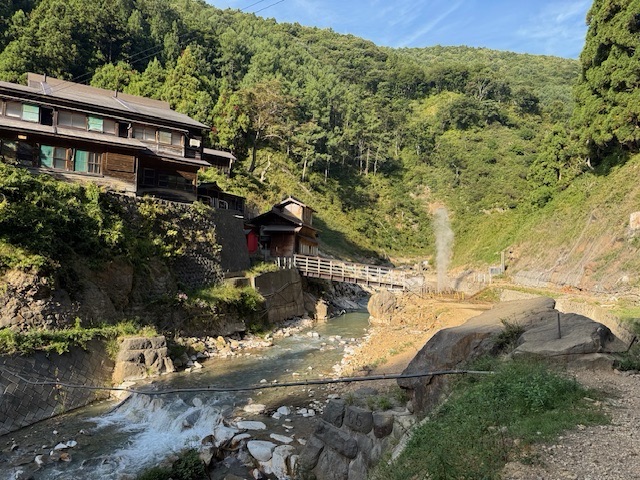
Originally, the macaques lived in the nearby mountains. However, due to the development of ski resorts and forest clearing in the 1950s, they were driven out of their mountain habitat and came down to human settlements, becoming pests. This situation reminds me of our plethora of Elephant Seals that discovered certain beaches along the California coast. They paused one year, liked it, and stayed.

The famous Japanese warrior Kato Kiyomasa depicted with his macaque who holds a writing brush, by Tsukioka Yoshitoshi (1883).
Since the 1960s, the monkeys have been regularly soaking in the hot springs of Jigokudani Monkey Park (opened in 1964), creating one of Japan’s most iconic and slightly surreal scenes. Wild primates behave as if they own a luxury onsen (hot spring) resort.
Multitudes of tourists flock here throughout the year, even though the snow part of snow monkeys is missing most of the year.
At 2,800 feet, the ground only stays snowy from December to March and at that time measured in yards not inches. The mile hike to the springs is very pleasant as it passes thru cool forests.
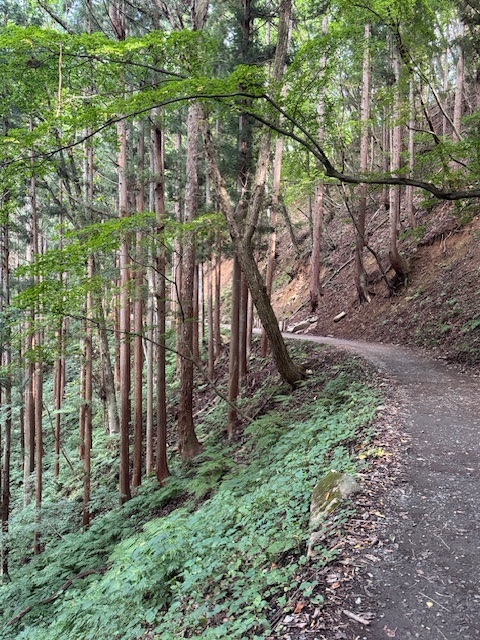
This is September, and not a snowflake in sight. Nor a monkey.
Monkey Management
So, what keeps the monkeys hanging around? Park attendants bribe them with irresistible snacks. The result: whether you come in the deep freeze or the leafy green season, you’ll still find macaques lounging near the hot springs, happily swimming, cleaning or relaxing.
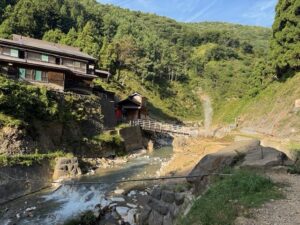
The Japanese macaques originally came to warm themselves in the hot springs during the cold winters. It was so luxurious, they stayed. Now you couldn’t beat them off with a stick. Not that the locals, or tourist, would want to.
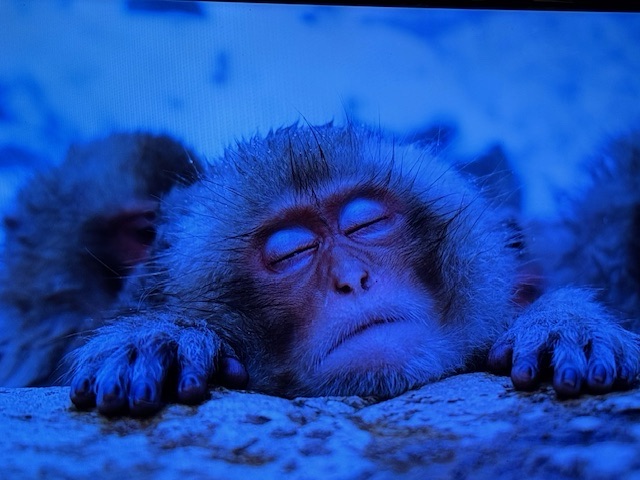
Unfortunately for us, it is hot and the monkeys have more sense than us. They remain in the mountains where it is cooler. Closest I got was on a television.
Japanese Macaques – The Species
Each morning, the macaques, or snow monkeys, descend from the cliffs like a troop of shaggy hotel guests, heading straight for their favorite hot tub—the onsen. After a long soak, they lounge, preen, and occasionally splash each other before heading back to the mountain forests, perhaps for a nightcap. It’s less “wild survival” and more “day at the spa,” except no one bothers with robes or sandals.
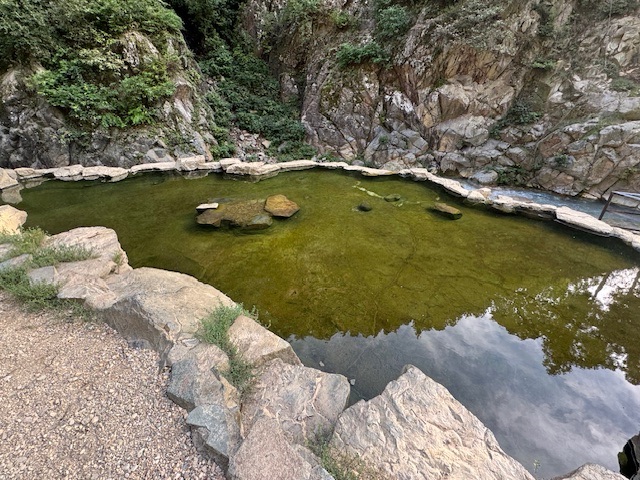
The monkeys are easy to recognize by their bright pink faces and rumps, thick shaggy coats in shades of brown to gray, and their short, stubby tails—about three inches long. Males tip the scales at about 25 pounds, stand nearly two feet tall, and carry just enough brainpower—3.4 ounces—to keep life interesting. They’re adorable, but their big teeth remind you they aren’t plush toys.
As for their attitude toward humans? Though they may look relaxed soaking in hot springs, they are not domesticated spa-goers. They’re not just bathers—they’re also nimble climbers, surprisingly strong swimmers, and fearless leapers. They tolerate gawking tourists with iPhones, but they’re still wild—social among themselves, cautious with us, and certainly less aggressive than some macaque species I’ve met in Thailand or Gibraltar. These macaques won’t swipe my water bottle, but they will give one the look if you step too close. Give them space, and everyone leaves happy.
Calendar of Arrivals – サル不在
Monkeyless in Mountains
Not only is our arrival timed, but the monkeys also have a Google Calendar, of sorts. Online, the head furry beast posts “Monkeys appearance forecast.” The log notes when the monkeys come down the mountain. They are not 100% committed to this schedule, and, in fact, quite often late. One does not want to see the entry サル不在 as on this date in 2024: saru fuzai, サル不在, “no monkeys.”
Monkeys do occasionally take a break. Like today! Knowing the scheduled feeding times, monkeys rarely miss out on a free meal. Time of spa departure usually occurs in early afternoon between 4 and 6 pm.
Alas, the monkeys checked their calendar. Hot and bored, they slept in today.
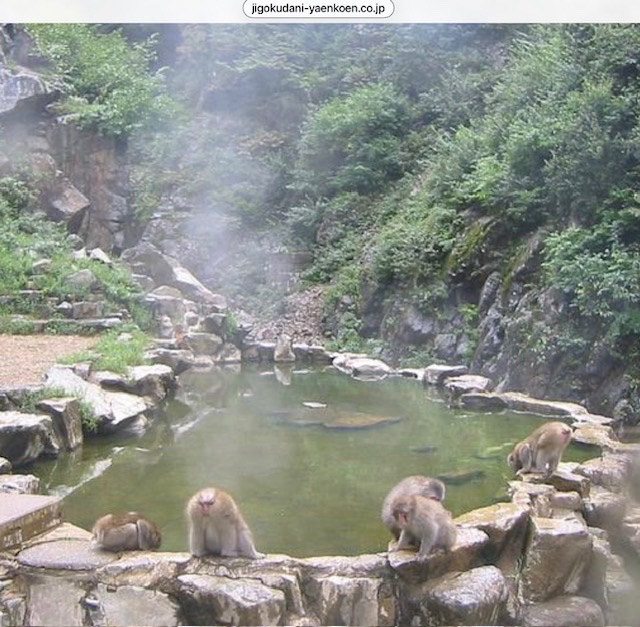
Japanese Ryokan
I overnight in nearby Yudanaka. Our hotel, the Biyunoyado, advertises as a royokan and known for its onsen (hot spring, bathing facilities). A ryokan is more than a hotel—it’s an experience.

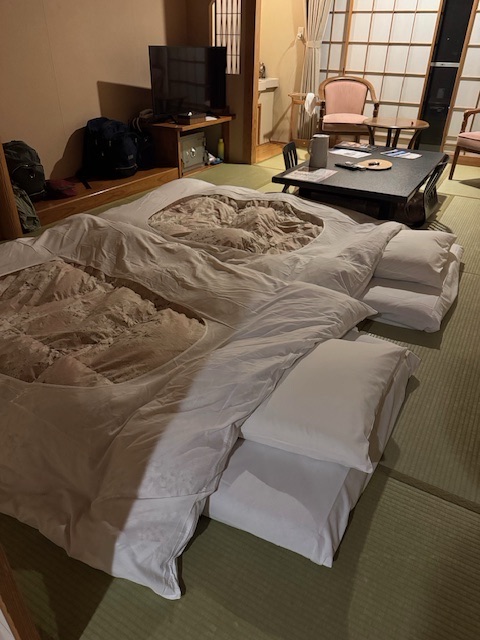
Staying at Biyunoyado is nothing like a Western hotel, where your biggest adventure is figuring out how the shower faucet works. Checking in, it feels like entering another world where shoes are instantly banished, slippers are mandatory, and suddenly you’re dressed in a robe (the yukata) and find yourself shuffling through polished tatami halls like a trainee monk.
Dining as an Art Form
Meals aren’t burgers or buffets, but a kaiseki feast comprised of an artistic parade of dishes that look more like exhibits in a gallery than food. Half the fun becomes trying to guess which tiny bowl I’m supposed to eat first.
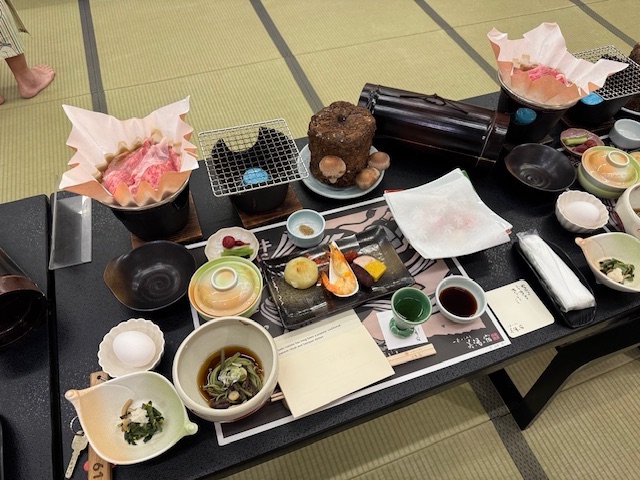
Tiny dishes of seasonal fish, vegetables, and pickles, steaming pots of veggies and meat, colorful stuff I don’t even know, seeming never to end. I must accept, eat, hand off, and place my chopsticks in the correct manner, each step a challenge if I hope not to offend. No one here dares eat with their hands.
Most everything is delicious! (Well, I’m still not a tea drinker.) I pretending I know what I’m eating. I keep fumbling with chopsticks, managing only the tiniest hint of skill. Truthfully, those snow monkeys would probably handle them with far more grace.
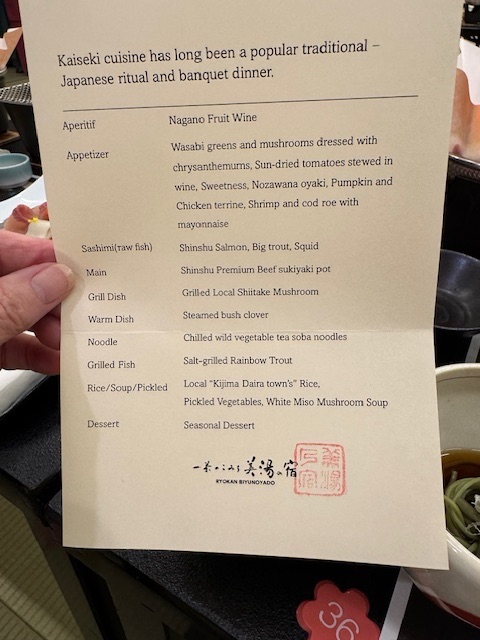
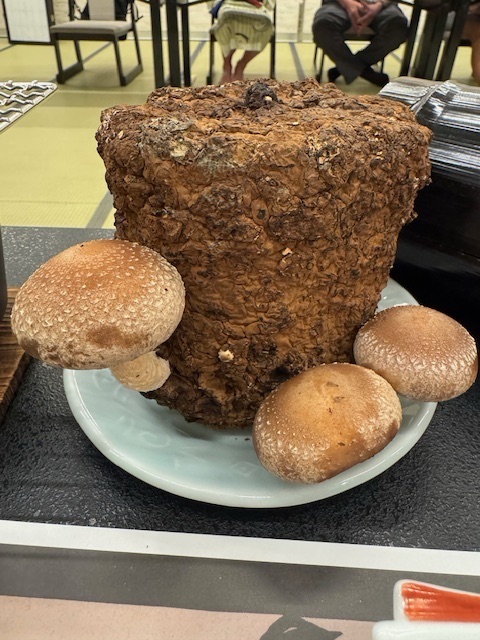
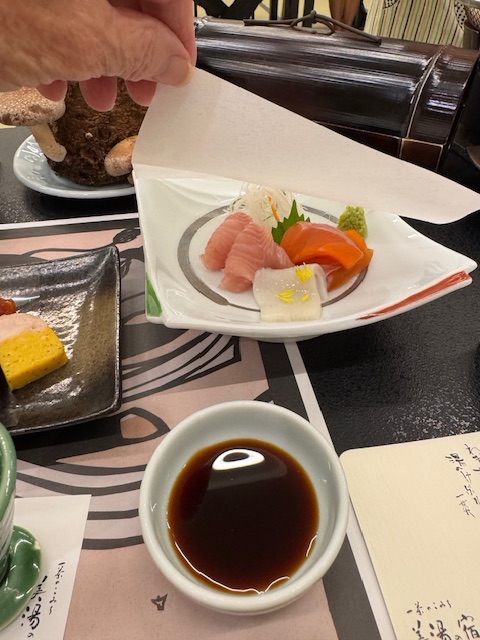
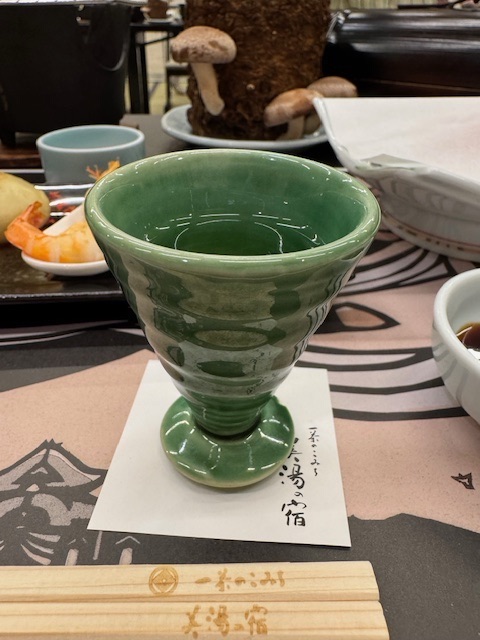
Onsens or Showers
Then there’s the onsen, supposedly, a ryokan’s highlight. This steaming natural hot spring bath makes jacuzzis back home feel like tepid kiddie pools.
Bathing is a ritual here: scrub and rinse thoroughly at the little shower stations before slipping into steaming mineral-rich waters. Shampoo, hair conditioner, and body soap are equipped in the large public bath. Heaven for a long day of touring ending with two noodle legs. In an onsen one may soak like a dumpling. Yes, it’s a shared bath. Yes, you bathe naked with strangers. Here, genders were separated. (There is a mixed-gender spa on the roof.) My thought: at least the monkeys have fur.
My Ryokan Survival Guide (for the slightly bewildered Westerner):
- Shoes off, slippers on. The moment you enter, your shoes vanish faster than socks in a dryer. Don’t argue—slippers are your new best friends. (There are special bathroom slippers too. Don’t mix them up unless you want disapproving looks.)
- Tatami etiquette. Those woven straw mats are sacred. No shoes, no dragging luggage, no dancing.
- Yukata 101. You’ll be given a cotton robe. Left flap always goes over right—otherwise, you’ve accidentally dressed yourself for your own funeral. Not ideal for dinner.
- Dinner as performance art. Kaiseki meals can have ten courses, each prettier (and smaller) than the last. Don’t panic if you don’t know what’s in a dish—eat it anyway.
- Onsen buck naked. They say nobody cares. Rule of thumb: scrub first, soak later. And whatever you do, don’t let your towel touch the water—it’s basically an international incident. You can wear your washcloth on your head if you choose.
- Sleeping on the floor. Futons roll out on the tatami after dinner. They look thin but are surprisingly comfy. Arising? Assistive devices like stools offered.
- Silence is golden. Ryokans are quiet retreats, not karaoke bars. Think “Zen retreat.”
Part history, part hospitality, and part hot bath therapy, my ryokan experience leaves me calmer, fed, and ready for tomorrow’s Japanese adventure. And no, I chose the excellent private shower.
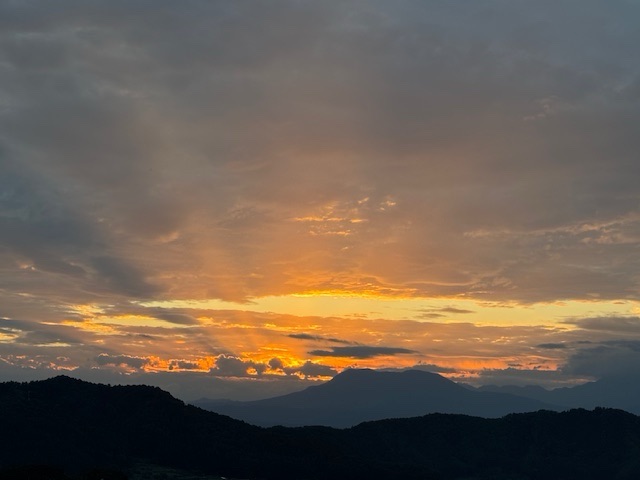
Cool, peaceful, spectacular mountains of Japan
0 Comments